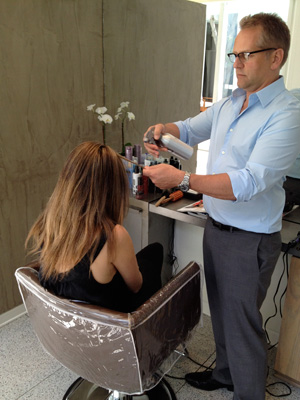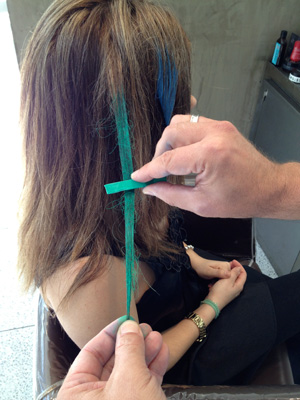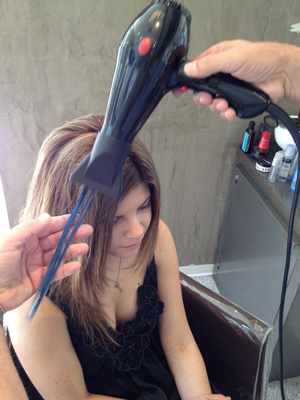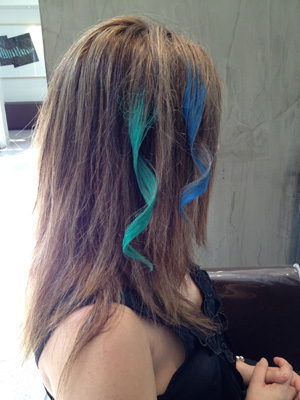A sea lion sick with pneumonia receives medical care and a second chance at life.
February 21, 2013 - update
Duzzy is now back in the ocean after a month stay at our hospital. Beachgoers enjoyed seeing him waddle his way to the water's edge at Rodeo Beach in Sausalito on February 20. View the slideshow and video below to see Duzzy's return to the wild.
February 12, 2013 - update
We received good news about Duzzy! He had a second set of x-rays and the radiology report confirms that his lungs are now clear of pneumonia! We are optimistic he will go home to the wild soon. Meanwhile he still needs rest and to gain a bit more weigh at our hospital. He is currently eating 18.5 lbs of fish a day - make a donation to feed duzzy!
Scroll down for Duzzy's full story to date and a slideshow of his x-rays...
February 8, 2013

When a 230 lb sea lion is lying in the sand allowing people to approach him, it’s a sure sign that he doesn’t feel well. That’s just how rescuers from The Marine Mammal Center found Duzzy at Marina State Beach on January 19, 2013. When he was brought to the Center’s hospital, it was apparent that he was also severely underweight, as his spine and other bones were visible.
Center veterinarians performed an initial exam and learned that Duzzy's lungs were very congested. In fact, the lack of breath sounds was so severe, they questioned whether the stethoscope was working correctly!
Duzzy was immediately prescribed a strong antibiotic to combat bacterial pneumonia, but in order to make sure he didn’t have other serious problems, full body x-rays, an ultrasound, and blood tests were ordered. Watch this slideshow of Duzzy getting x-rays.
We are happy to report that Duzzy tolerated the anesthesia necessary for the x-ray procedure very well. He is eating and slowly getting stronger while the antibiotics are taking care of the pneumonia.

We are hopeful that he will make a full recovery and be able to return to his ocean home soon.
Duzzy is now back in the ocean after a month stay at our hospital. Beachgoers enjoyed seeing him waddle his way to the water's edge at Rodeo Beach in Sausalito on February 20. View the slideshow and video below to see Duzzy's return to the wild.
February 12, 2013 - update
We received good news about Duzzy! He had a second set of x-rays and the radiology report confirms that his lungs are now clear of pneumonia! We are optimistic he will go home to the wild soon. Meanwhile he still needs rest and to gain a bit more weigh at our hospital. He is currently eating 18.5 lbs of fish a day - make a donation to feed duzzy!
Scroll down for Duzzy's full story to date and a slideshow of his x-rays...
February 8, 2013

Duzzy didn't look healthy when rescuers first found him on January 19, 2013.
© Petra Mottishaw. The Marine Mammal Center.
When a 230 lb sea lion is lying in the sand allowing people to approach him, it’s a sure sign that he doesn’t feel well. That’s just how rescuers from The Marine Mammal Center found Duzzy at Marina State Beach on January 19, 2013. When he was brought to the Center’s hospital, it was apparent that he was also severely underweight, as his spine and other bones were visible.
Center veterinarians performed an initial exam and learned that Duzzy's lungs were very congested. In fact, the lack of breath sounds was so severe, they questioned whether the stethoscope was working correctly!
Duzzy was immediately prescribed a strong antibiotic to combat bacterial pneumonia, but in order to make sure he didn’t have other serious problems, full body x-rays, an ultrasound, and blood tests were ordered. Watch this slideshow of Duzzy getting x-rays.
We are happy to report that Duzzy tolerated the anesthesia necessary for the x-ray procedure very well. He is eating and slowly getting stronger while the antibiotics are taking care of the pneumonia.

Veterinarians at The Marine Mammal Center used diagnostic tools to learn why Duzzy was ill. He had pneumonia.
© Ingrid Overgard - The Marine Mammal Center
We are hopeful that he will make a full recovery and be able to return to his ocean home soon.





